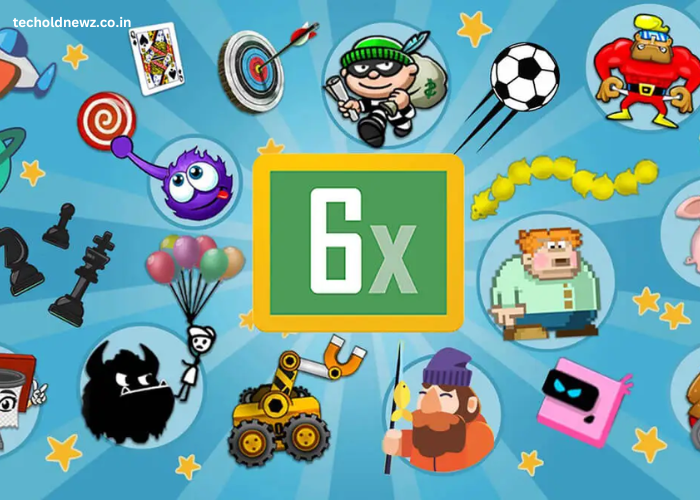The classroom environment plays a crucial role in shaping the way students learn. Teachers and administrators are continuously exploring innovative ways to improve the space in which learning occurs. One such concept gaining attention is Classroom 6X. This idea is about transforming traditional classrooms into dynamic, engaging, and flexible learning environments.
Classroom 6X refers to a modern approach that focuses on enhancing the overall teaching and learning experience. It involves integrating various factors, such as technology, layout, interactive learning methods, and emotional intelligence, to create an atmosphere where both students and teachers can thrive. Understanding Classroom 6X can help educators design classrooms that cater to the diverse needs of students and improve overall educational outcomes.
Key Points
- Classroom 6X focuses on transforming traditional learning spaces into more dynamic environments.
- It involves incorporating new teaching methods, technology, and flexible seating arrangements.
- Classroom 6X aims to foster better student engagement, creativity, and interaction.
What Is Classroom 6X and How Does It Work?
Classroom 6X is a modern framework designed to improve the learning experience by blending different elements. These elements focus on providing a space where students can engage with both the content and each other in a meaningful way. The goal of Classroom 6X is to support students in their academic journey and help them develop not just intellectual skills but also social and emotional intelligence.
1. Technology Integration in Classroom 6X:
Technology plays a central role in Classroom 6X. Interactive whiteboards, tablets, and other digital devices enable students to access information more easily and engage in interactive lessons. For instance, teachers can integrate virtual reality (VR) or augmented reality (AR) to enhance subjects like history or science. Students can experience historical events or explore the human body in 3D, making learning more immersive and engaging.
In addition to using technology in teaching, Classroom 6X emphasizes the use of learning management systems (LMS). These platforms allow students to track their progress, collaborate with classmates, and access resources outside the classroom. This connection between digital tools and traditional learning methods helps create a more rounded educational experience.
Reminder: Technology plays a pivotal role in the Classroom 6X framework, allowing both teachers and students to interact in new, innovative ways.
2. Flexible Seating Arrangements:
Classroom 6X reimagines the traditional classroom seating setup. Gone are the days of rows of desks facing the blackboard. Instead, flexible seating allows students to choose how they want to work. Teachers can incorporate different seating options, such as standing desks, group tables, bean bags, or floor seating, to accommodate various learning styles. This flexibility helps students feel more comfortable and engaged during lessons.
For example, in a Classroom 6X setup, a student who learns best through group discussions can choose to sit at a round table with peers. Alternatively, a student who prefers independent work may opt for a quiet corner with a standing desk. These seating options promote autonomy and self-directed learning.
Key Takeaway:
The integration of flexible seating arrangements allows students to have more control over their learning environment, which improves engagement and focus.
What Are the Benefits of Classroom 6X?
Classroom 6X is built around providing a dynamic, flexible, and technology-driven learning environment. By adopting this approach, schools and educators can expect several key benefits, which can significantly enhance the educational experience for both teachers and students.
1. Improved Student Engagement:
Classroom 6X enhances student engagement by offering a diverse range of learning methods. The combination of technology, flexibility in seating, and active learning strategies keeps students interested in the subject matter. Rather than sitting through a lecture for an entire class period, students are encouraged to participate in activities, discussions, and hands-on learning. For instance, in science, students might work in groups to build a model, while in history, they may take part in role-playing activities to understand different historical perspectives.
Research has shown that when students are engaged in their lessons, they are more likely to retain information and perform better academically.
2. Encourages Collaborative Learning:
Collaboration is a key component of Classroom 6X. By introducing different workspaces and providing opportunities for group projects, students develop teamwork and communication skills. In a Classroom 6X environment, students are not simply listening to a lecture; they are actively collaborating with their peers, solving problems together, and contributing ideas. This method allows students to learn from each other and grow collectively.
For example, students can work in groups to solve a math problem, where each member contributes a part of the solution. This fosters a sense of shared responsibility and encourages collaboration.
Reminder: Classroom 6X is designed to promote collaboration and teamwork, both of which are essential skills for the future workforce.
3. Fosters Creativity and Innovation:
The flexibility and diversity of learning tools in Classroom 6X encourage creativity. With access to various learning materials, technology, and different seating arrangements, students have the freedom to think outside the box. Instead of sticking to a rigid curriculum, students can explore new ideas and innovate within their subject areas. For example, in an art class, students can use digital software alongside traditional materials to create original pieces of artwork.
By fostering creativity in the classroom, Classroom 6X helps students develop problem-solving skills, critical thinking, and the ability to innovate. These skills are valuable not only in school but also in real-world scenarios.
Key Takeaway:
Classroom 6X fosters creativity and innovation by encouraging diverse learning methods and providing students with the tools to explore and think critically.
How Can Teachers Implement Classroom 6X in Their Own Classrooms?
For teachers interested in adopting Classroom 6X, the process involves thoughtful planning and integration of the various components. Below are some steps teachers can take to implement this approach effectively:
1. Start with Technology Integration:
Begin by incorporating technology into your lessons. This could include using interactive whiteboards, classroom tablets, or online learning platforms. You can also explore digital tools like Google Classroom or Microsoft Teams for collaboration. Slowly introduce students to these tools, ensuring that they understand how to use them effectively.
2. Experiment with Seating Options:
Introduce flexible seating arrangements in your classroom. Start with a few options and observe how students respond. You might start by offering group tables, allowing students to work together, or provide bean bags for more relaxed learning environments. Allow students to choose where they sit based on their learning preferences.
3. Incorporate Active Learning Methods:
Rather than relying solely on lectures, consider adding more hands-on activities, group work, and project-based learning into your curriculum. Encourage students to work together, conduct experiments, or engage in discussions that require critical thinking.
Note: It’s important to introduce Classroom 6X gradually and assess how well it works for both you and your students.
Key Takeaway:
Teachers can begin implementing Classroom 6X by integrating technology, offering flexible seating, and incorporating active learning methods into their teaching strategies.
Conclusion
Classroom 6X represents a progressive shift in how we view traditional classrooms. By integrating technology, flexibility, and collaboration, educators can create environments that better cater to the needs of modern students. This approach not only enhances student engagement and creativity but also prepares them for the challenges they will face in the future. Classroom 6X isn’t just a trend—it’s a transformation in the way we approach teaching and learning.
FAQ’s
1. What is Classroom 6X?
Classroom 6X is a modern approach that focuses on improving the learning environment by incorporating technology, flexible seating, and active learning methods.
2. How does Classroom 6X improve student engagement?
It improves engagement by making learning interactive, using technology, and encouraging students to work collaboratively and creatively.
3. What are the key components of Classroom 6X?
The key components include technology integration, flexible seating arrangements, and collaborative learning opportunities.
4. Can Classroom 6X be implemented in any classroom?
Yes, Classroom 6X can be adapted to different classroom environments, but it requires thoughtful planning and gradual implementation.
5. How does Classroom 6X foster creativity?
By providing students with diverse learning tools and flexible spaces, Classroom 6X encourages critical thinking and creative problem-solving.


